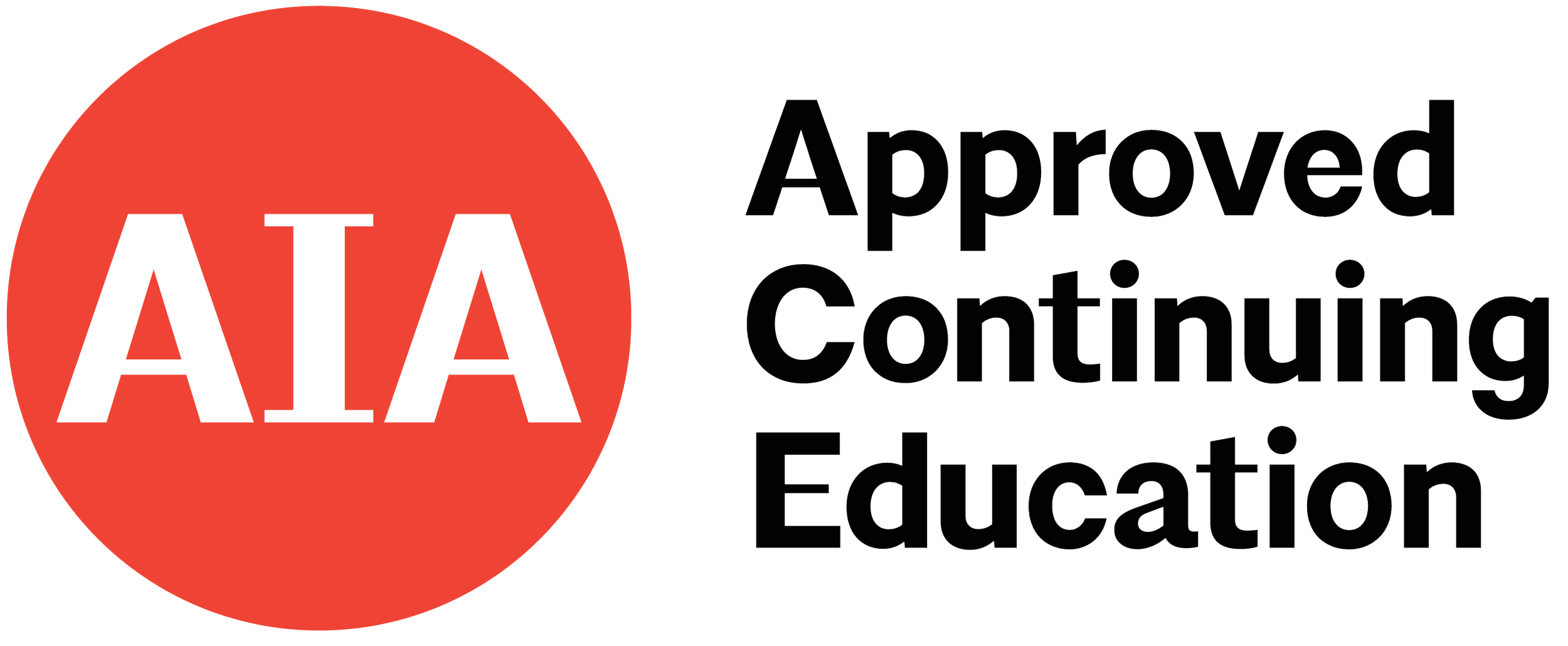CEUs
1 LU/HSW
Cost
$10 Members of AIA, 2030 District, ACI, APA, ASCE, ASHRE, ASID, ASLA, ASPE, Boyer Guild, CNU, CSI, DesignLAB, Green Umbrella, IIDA, NAIOP, NAWIC, NOMA, SAME, SEGD, SMPS, ULI, or USGBC
$25 non members
Location
GBBN
Program Overview
Lake Flato Architects is a collective of architects, interior designers, sustainability leaders, and urban designers who create designs that are intrinsically rooted in place and responsive to local conditions and traditions. This place-based approach guides us in our quest to build responsibly, design artfully and harness that which is enduring: climate, context, and nature’s patterns and rhythms. Equal parts pragmatic and poetic, our work intentionally complements the diversity of our landscapes and the richness of our daily lives.
We care deeply about the health of those who inhabit the spaces we design and hold ourselves accountable for making a positive impact on future generations. In light of our rapidly changing climate, we can no longer settle for doing less harm. We must use each opportunity to create regenerative environments that increase biodiversity, foster resilience, and bolster the health of individuals, communities, and the environment.
Presented by AIA Cincinnati VISION.
Speaker
Steve Raike, AIA LEED AP BD+C – Partner, Director of Project Delivery – Lake | Flato
Steve Raike is passionate about marrying the craft of architecture with the science of sustainability. Throughout his career Steve has focused on the holistic integration of building craft and sustainability, resulting in a portfolio of widely published and influential work as well as numerous national design and sustainability awards. Steve's portfolio of work covers a broad range of project types, including single family residential projects as well as institutional and civic projects such as the Austin Central Library, Houston Arboretum, and Arizona State University Polytechnic Academic District. Collaborating on a broad array of projects allows him to explore design and sustainability at all scales of the built environment and thoughtfully tailor design responses for the unique needs of each client and community. A passionate educator, Steve has lectured throughout North America on tectonics, craft and building performance.
Learning Objectives
Daylight integration - Participants will learn strategies to effectively integrate daylighting into building design for the increased wellness, efficiency, and safety of building occupants.
Energy Conservation – Participants will learn strategies to increase the efficiency of building envelopes and reduce the use of energy required to condition buildings.
Resiliency – Participants will hear strategies employed in the design, location, and orientation of buildings to respond to changing climatic conditions and extend the lifespan of buildings.
Adaptive Reuse – Participants will learn strategies for the adaptive reuse of buildings to create thriving communities that are safe, walkable, and tied to their local history and culture.
Sponsors
Continuing Education Details
Course Number: V2025.b
Instructional Delivery Method: live
AIA CES Program Approval Expiration Date: 2.7.28
Prerequisites: none
Program Level: beginner
Advance Learner Preparation: none
AIA CES Provider Statement
AIA Cincinnati is a registered provider of AIA-approved continuing education under Provider Number 088. All registered AIA CES Providers must comply with the AIA Standards for Continuing Education Programs. Any questions or concerns about this provider or this learning program may be sent to AIA CES (cessupport@aia.org or (800) AIA 3837, Option 3).
This learning program is registered with AIA CES for continuing professional education. As such, it does not include content that may be deemed or construed to be an approval or endorsement by the AIA of any material of construction or any method or manner of handling, using, distributing, or dealing in any material or product.
AIA continuing education credit has been reviewed and approved by AIA CES. Learners must complete the entire learning program to receive continuing education credit. AIA continuing education Learning Units earned upon completion of this course will be reported to AIA CES for AIA members. Certificates of Completion for both AIA members and non-AIA members are available upon request.




